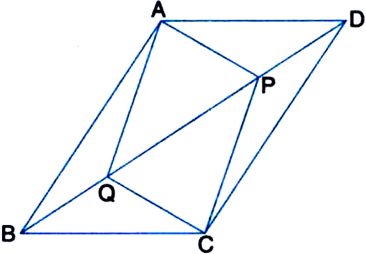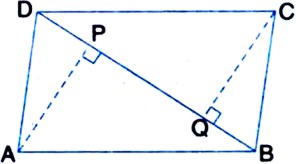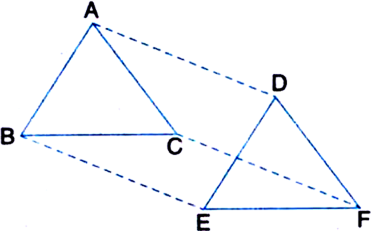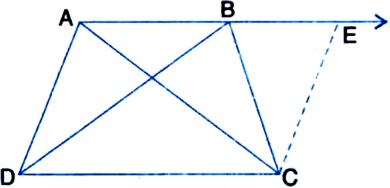ABCD is a rectangle and P, Q, R and S are mid-points of the sides AB, BC, CD and DA respectively. Show that the quadrilateral PQRS is a rhombus.
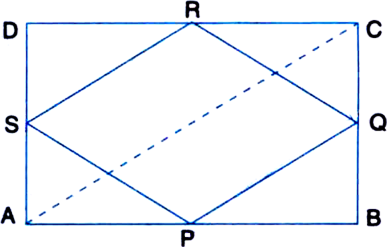
To Prove: Quadrilateral PQRS is a rhombus.
Construction: Join AC.
Proof: In ∆ABC,![]() P and Q are the mid-points of AB and BC respectively.
P and Q are the mid-points of AB and BC respectively.![]()
In ![]()
![]() S and R are the mid-points of AD and DC respectively.
S and R are the mid-points of AD and DC respectively.![]()
From (1) and (2),![]()
![]() Quardrilateral PQRS is a parallelogram ....(3_
Quardrilateral PQRS is a parallelogram ....(3_
In rectangle ABCD,
AD = BC | Opposite sides![]()
| Halves of equals are equal![]() AS = BQ
AS = BQ
In ![]()
AP = BP
| ∵ P is the mid-point of AB
AS = BQ | Proved above
∠PAS = ∠PBQ | Each = 90°
∴ ∆APS ≅ ∆BPQ
| SAS Congruence Axiom
∴ PS = PQ ...(4) | C.P.C.T.
In view of (3) and (4), PQRS is a rhombus.





